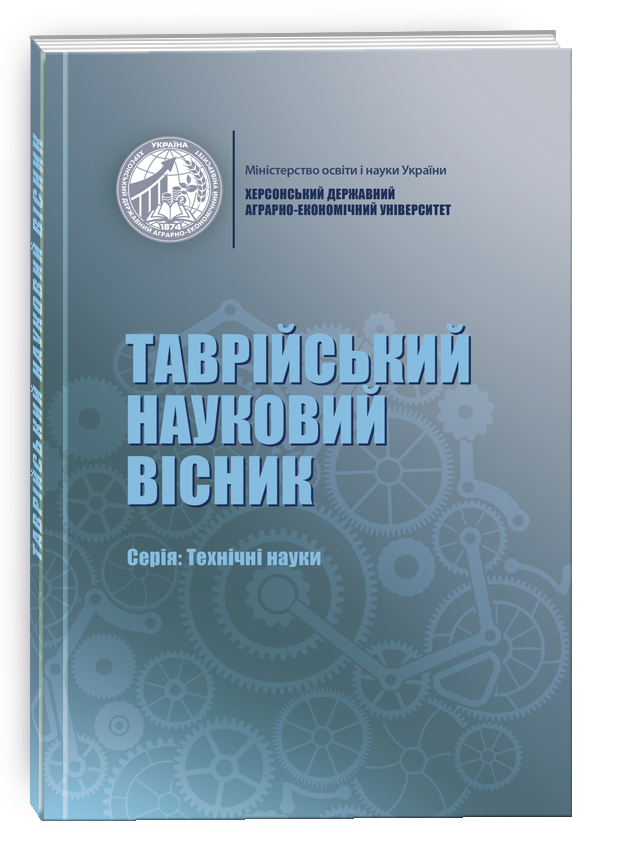NEUROEVOLUTIONARY COLLOCATION METHOD FOR SOLVING DIFFERENTIAL EQUATIONS
DOI:
https://doi.org/10.32782/tnv-tech.2023.6.9Keywords:
numerical methods, neural networks, genetic algorithms, approximationAbstract
The importance of the development of numerical methods for solving differential equations is determined by their wide application in important fields of science and technology. The fact that many physical and engineering phenomena can be mathematically described by differential equations, but it is often difficult to find their analytical solutions. This makes numerical methods of approximate solution crucial. These methods are necessary for computer modeling and simulation of complex technical systems. Taking into account the wide range of types of differential equations, approximate methods become a universal tool, adapted to solve complex problems in various fields, and allow better consideration of the requirements of modern computing technologies. The use of neural networks for the approximate solution of differential equations is a promising direction in the field of scientific modeling. Neural networks with the addition of physical information in the form of a complex loss function are an innovative approach that combines traditional methods of solving physical problems with modern techniques of deep learning. In this approach, a neural network, which is typically used to approximate functions, receives as input not only input data but also physical information about the system or process it is modeling. This physical information can be included as additional parameters, constraints, or equations. The complex loss function takes into account the quality of approximation by the neural network, as well as the physical principles of the problem. This allows neural networks to adapt to physical constraints and provides an approximate solution of problems, taking into account important aspects of the physical structure. The paper examines the possibility of applying genetic algorithms to adjust the hyperparameters of neural networks approximating an unknown function.
References
Vladov S., Shmelov Yu., Kotliarov K., Hrybanova S., Husarova O., Derevyanko I., Chyzhova L. Onboard parameter identification method of the TV3-117 aircraft engine of the neural network technologies. Вісник КрНУ імені Михайла Остроградського. Випуск 5/2019 (118), 2019. P. 90-96.
Edwards C.H., Penney D.E., Calvis D.T. Differential Equations and Boundary Value Problems: Computing and Modeling. Boston: Pearson, 2014. 797p.
Pinder G.F. Numerical Methods for Solving Partial Differential Equations. John Wiley & Sons, Inc., 2018.
Karniadakis G.E., Kevrekidis I.G., L.Lu, P. Perdikaris, Wang S., Yang L., Physics-informed machine learning, Nat Rev Phys, vol. 3, no. 6, pp. 422–440, 2021, doi: 10.1038/s42254-021-00314-5.
Willard J., Jia X., Xu S., Steinbach M., Kumar V. Integrating Scientific Knowledge with Machine Learning for Engineering and Environmental Systems. ACM Comput. Surv., 2022, https://doi.org/10.1145/3514228
Cybenko G.V. Approximation by Superpositions of a Sigmoidal function, Mathematics of Control, Signals and Systems, , 1989, vol. 2 no. 4 pp. 303-314
Lagaris I.E., Likas A., Fotiadis D.I. Artifial Neural Networks for Solving Ordinary and Partial Differential Equations. arXiv:physics/9705023v1, 1997, https://doi.org/10.1109/72.712178
Raissi M., Perdikaris P., Karniadakis G.E. Physics-informed neural networks: A deep learning framework for solving forward and inverse problems involving nonlinear partial differential equations. Journal of Computational Physics 378, 2019, 686–707.
Sirignano J., Spiliopoulos K. DGM: A deep learning algorithm for solving partial differential equations. arXiv:1708.07469v5, 2018.
Weinan E, Bing Yu. The Deep Ritz Method: A Deep Learning-Based Numerical Algorithm for Solving Variational Problems. Commun. Math. Stat.,2018, 6:1–12. https://doi.org/10.1007/s40304-018-0127-z
Hongwei Guo, Timon Rabczuk, and Xiaoying Zhuang. A Deep Collocation Method for the Bending Analysis of Kirchhoff Plate. arXiv:2102.02617v1, 2021.
Lu Lu, Xuhui Meng, Zhiping Mao, George Em Karniadakis. DEEPXDE: A Deep Learning Library For Solving Differential Equations. arXiv:1907.04502v2, 2020.
Seo J. Solving real-world optimization tasks using physics-informed neural computing. Scientific Reports, 14(1), 202, 2024.
Radbakhsh S.H., Zandi K., Nikbakht M.. Physics-informed neural network for analyzing elastic beam behavior. Structural Health Monitoring, 2023.
Cai Z., Chen J., Liu M., Liu X., Deep least-squares methods: An unsupervised learning-based numerical method for solving elliptic PDEs, J. Comput. Phys. 420, 2020, 109707, http://dx.doi.org/10.1016/j.jcp.2020.109707.
Uriarte C., Pardo D., Omella A.J. A Finite Element based Deep Learning solver for parametric PDEs. Comput. Methods Appl. Mech. Engrg. 391, 2022, 114562, https://doi.org/10.1016/j.cma.2021.114562
Bai J., Liu G.-R., Gupta A., Alzubaidi L., Feng X.-Q., Gu Y. Physics-informed radial basis network (PIRBN): A local approximation neural network for solving nonlinear PDEs, Computer Methods in Applied Mechanics and Engineering, 415, 2023. ISSN 0045-7825, https://doi.org/10.1016/j.cma.2023.116290.
Galvan E., Mooney P. Neuroevolution in Deep Neural Networks: Current Trends and Future Challenges, 2020. https://doi.org/10.48550/arXiv.2006.05415
Holland J. Adaptation in natural and artificial systems. Ann Arbor : University of Michigan Press, 1975. 183 p.







